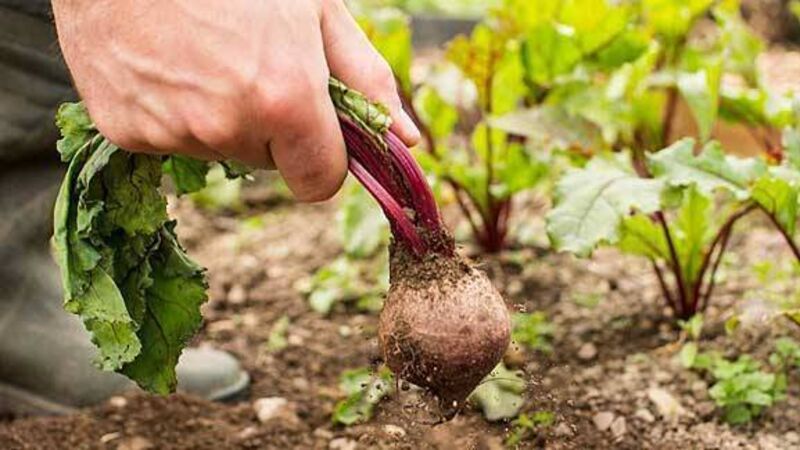Red, steady, go sow

DEEP and ruby red in colour, beetroot (Beta Vulgaris) adds a vibrant hue and flavour to any garden and dish. Not only is beetroot’s boldly bright tap root edible, but so too are its leaves and stem. All three are tantalisingly tasty, versatile and bursting with nutrients, colour and flavour. With a little effort it is possible to enjoy your own homegrown beetroot pretty much all year round.
Beetroot really is one of the simpler trouble-free crops to grow and is definitely worth including in your roots rotation. For optimum results, it pays to sow it little and often. Beetroots are at their prime when they are young, small and tender so don’t to be shy about picking baby. These will taste delicious and once harvested, they will allow remaining beets the space needed to grow on. Once the ground warms up outside, sowings can be made from April right through to July.
Beetroot seeds are easier to handle than those of other root vegetables and in fact they come as a cluster of three or four seeds together. Some gardeners like to soak them in water for a couple of hours before sowing but this is not essential. Unlike carrots and parsnips, beetroot is not so disapproving of being transplanted so can be sown indoors in seed or module trays to get a head start on an outdoor crop. However the easiest option is to just sow direct into the ground where they will grow. If you choose the former modular tray option, sow just one seed cluster per module, thin to the strongest seedling and then transplant after about three weeks. Ensure to handle seedlings with extreme care as roots are delicate. If direct sowing, seeds should be shallow sown (2cm deep) into rows 30 cm apart aiming to leave approximately 10cm spacing between each seed. Cover with horticultural fleece once sown as this will not only help increase soil temperature and thus seed germination but also protect seedlings from any undesired investigation by local birds. Once seeds germinate, thinning is necessary to prevent crowding and to allow roots the space to grow.
Like most other root veg, beetroot likes to grow in light, well-drained fertile soil. Well-rotted garden compost dug into beds before sowing will help crops greatly. Like carrots, beetroot is also not partial to growing in soil that has recently been manured. Once crops are established, a regular hoeing is necessary and ensure that soil is kept moist as this will result in tastier tenderer harvests. Watering will be necessary in dry spells and it goes without saying for all container grown crops as well.
Clearly beetroot is synonymous with the colour red as the saying ‘to go beetroot’ suggests; other colourful cultivars such as ‘Burpee’s Golden’ with it’s golden organe skin and yellow flesh, is well worth growing. This variety keeps its colour when cooked and does not bleed. Another variety, ‘Barbabietola di Chioggia’ is coveted by chefs as when sliced the flesh has white internal rings.
According to experts, the more brightly coloured the vegetable, the more protective the health benefits against cancer and other diseases. Red, golden or striped, no questions need to be asked regarding the inclusion of beetroot on the bright coloured vegetable list.












